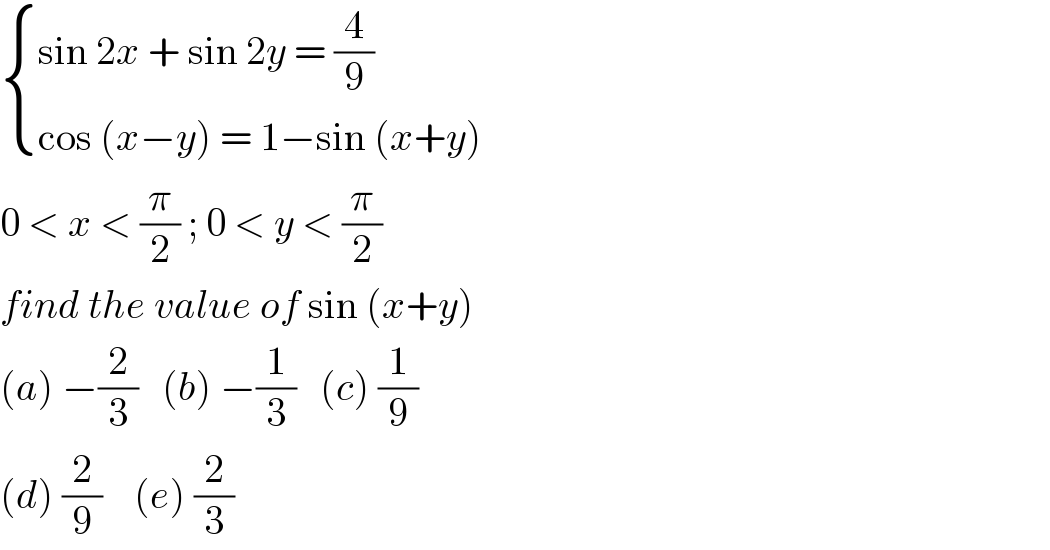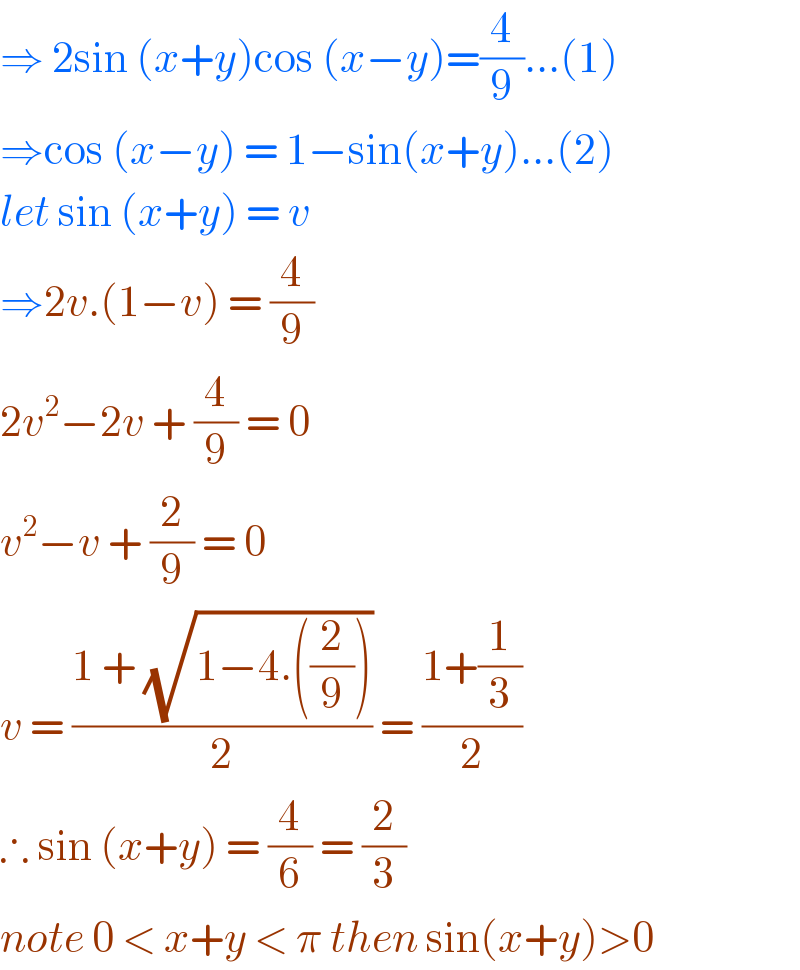
Question and Answers Forum
Question Number 105243 by bemath last updated on 27/Jul/20

Answered by bramlex last updated on 27/Jul/20

Commented bybemath last updated on 27/Jul/20

Answered by Dwaipayan Shikari last updated on 27/Jul/20

| ||
Question and Answers Forum | ||
Question Number 105243 by bemath last updated on 27/Jul/20 | ||
 | ||
Answered by bramlex last updated on 27/Jul/20 | ||
 | ||
| ||
Commented bybemath last updated on 27/Jul/20 | ||
 | ||
Answered by Dwaipayan Shikari last updated on 27/Jul/20 | ||
 | ||
| ||